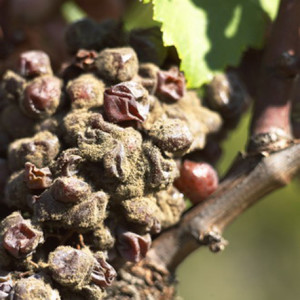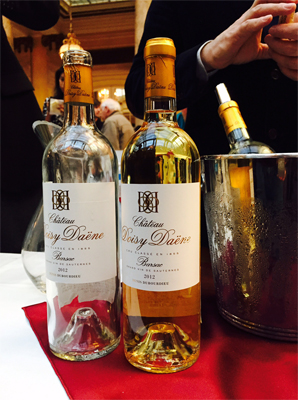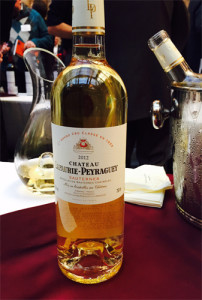
Grapes sporting botrytis cinerea, the noble rot
The illustrious dessert wines of Sauternes had a difficult vintage in 2012. Three of the most renowned chateaux, Yquem, Rieussec and Suduiraut, did not produce a 2012. Yquem did not produce a 2010 either, which will undoubtedly preserve its reputation and inflate the price in better years. Weather, as always in Sauternes, was the culprit.
For you newbies out there, just over 30 chateaux produce wine in Sauternes (and its sub-region of Barsac). The predominant grape is Semillion, with a little Sauvignon and Muscadelle. Under properly humid conditions botrytis, the noble mold, will settle on the grape clusters late in the season (mid-September to mid-October). The mold sucks moisture out of the grapes, concentrating the sugar and giving the wine a viscous texture, intense fruit, and subtle herbal-honey complexity, similar to Hungarian Tokaji and German trockenbeerenauslese.
Despite the difficulties experienced in some of the top châteaux, there are some very nice 2012 Sauternes. They have concentration without the nuance of some vintages, and they don’t have a lot of botrytis character, but they are uniformly fresh and stylish. Though they’re perfectly enjoyable now, you’ll benefit from laying them down for a few years.
These are small production wines and not widely distributed, so the retail prices tend to fluctuate with demand. As a result, prices given here are only approximate. Frankly, given the limited production and labor-intensive regimen that is required to make them (usually multiple passes through the vineyard etc.), Sauternes are a bargain.
Presented in alphabetical order:
Château Climens:
100% from Sémillion. Concentrated honeysuckle aroma, velvety on the palate with a little herbal note behind flavors of apricot-peach nectar, and enough acid to keep it from being cloying. $60. 91 points
Château Coutet:
75% Sémillion, 23% Sauvignon Blanc, 2% Muscadelle. Honey and pineapple overtones, with good acid. $45. 90 points
Château Doisy Daëne:
87% Semillion, 13% Sauvignon Blanc, Doisy Daëne has always been a little lighter and fresher than its peers. This vintage is rich and concentrated, with peach and apricot notes. Sweet and luscious, with an indefinable “Wow Factor.” Lovely finish. $38. 91 points
Château Guiraud:
65% Sémillion, 35% Sauvignon Blanc. Of the group, this was the heaviest. It’s very, very rich and just a bit cloying to my palate. $40. 87 points
 Clos Haut-Peyraguey:
Clos Haut-Peyraguey:
There’s a matchstick note under the stone fruit on the nose. On the palate it’s rich, sweet, herbal, and a bit cloying on the finish. $30. 86 points
Château Lafaurie-Peyraguey:
90% Sémillion, 8% Sauvignon Blanc, 2% Muscadelle. Very rich and concentrated (almost too syrupy), with apricot and butterscotch notes. $35. 88 points
Château La Tour Blanche:
83% Semillion, 12% Sauvignon Blanc, 5% Muscadelle. This is a lovely wine and the only one in which a degree of botrytis character shows through. Ripe tangerine and peach, complex dried herb and honey notes, very sweet, yet balanced. Extremely long finish. My favorite of the vintage. $41. 92 points

Château de Rayne Vigneau:
80% Sémillion, 20% Sauvignon Blanc There is a freshness that sets this one apart in this vintage. Nonetheless, it’s still a rich, full-bodied dessert all by itself, with layers of honey and apricot syrup, and an unbelievably long finish. $35. 91 points
